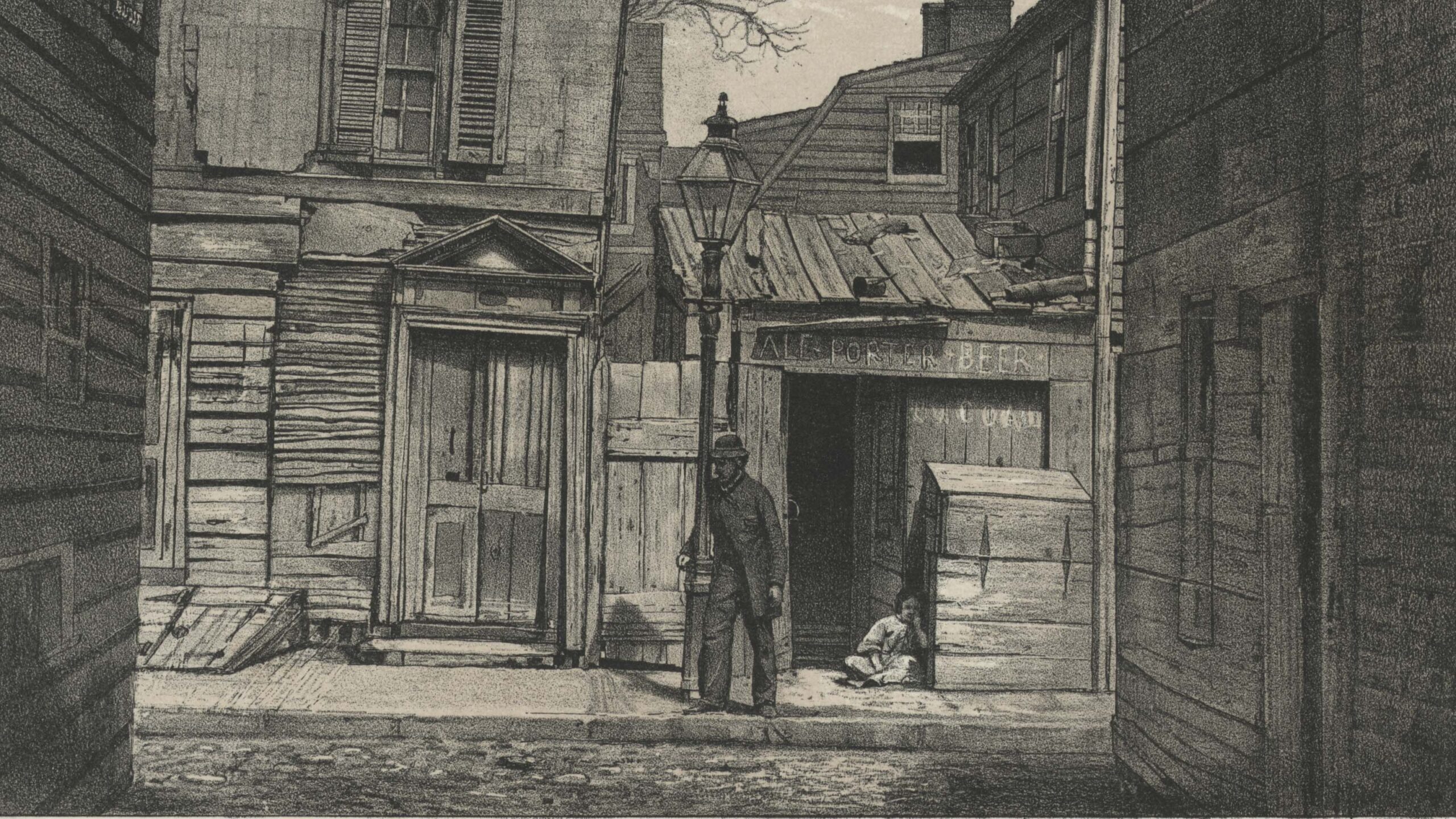While working on this, I have been listening to an episode of The Weeds podcast called “Is homelessness a crime?” It’s about a current case before the Supreme Court. The case hinges on whether cities can fine individuals who violate municipal laws by sleeping outdoors when these individuals have no where else to go. Lower courts have found that cities cannot fine people in these circumstances, but that is being appealed.
The case is gaining press because of a rise in people seen living outside, unsheltered, especially in the west. In 2023, the US saw a 12% spike in the number of people experiencing homelessness. This was shocking given that this number had been steadily declining for over 15 years. One in every 500 Americans has experienced homelessness. Though, in Philly, the number of people experiencing homelessness is more than double the national average.
Advocates point to a lack of affordable housing as a major problem. Philly’s Project Home casts a wider net, noting that there are other contributing factors, such as a lack of affordable healthcare, especially for mental health and substance abuse, as well as systemic racism and domestic violence.
Are we experiencing another Gilded Age of homelessness?
In comparison, in the Gilded Age from the 1870s-1890s, one adult male in twenty-three had slept in a police station at some point in their life because they had no where else to go. This meant that 10-20% of American families had a close relative who had experienced homelessness, or what they called “tramping” (DePastino 13). The scale of the problem in the Gilded Age was many times worse than today.
It was clear that these tramps were thought to be engaging in behavior that was not just immoral, it was also criminal. You can see how tramps were viewed when Allan Pinkerton, of Pinkerton’s Detective Agency, dedicated 4 chapters to tramps in his 1878 book, Strikers, Communists, Tramps and Detectives. Tramping was seen as part of these larger, working-class movements that threatened to destabilize the status quo. It wasn’t until the 1890s that some people began to think that the lack of employment was the main cause of homelessness. Maybe these tramps weren’t just trying to blow civilization sky high. Maybe they just needed a job.
So, yes, we have a serious problem with homelessness right now. But we have been slowly moving away from treating the person who is experiencing homelessness as a criminal. This Supreme Court case will decide just how far we’ve come.
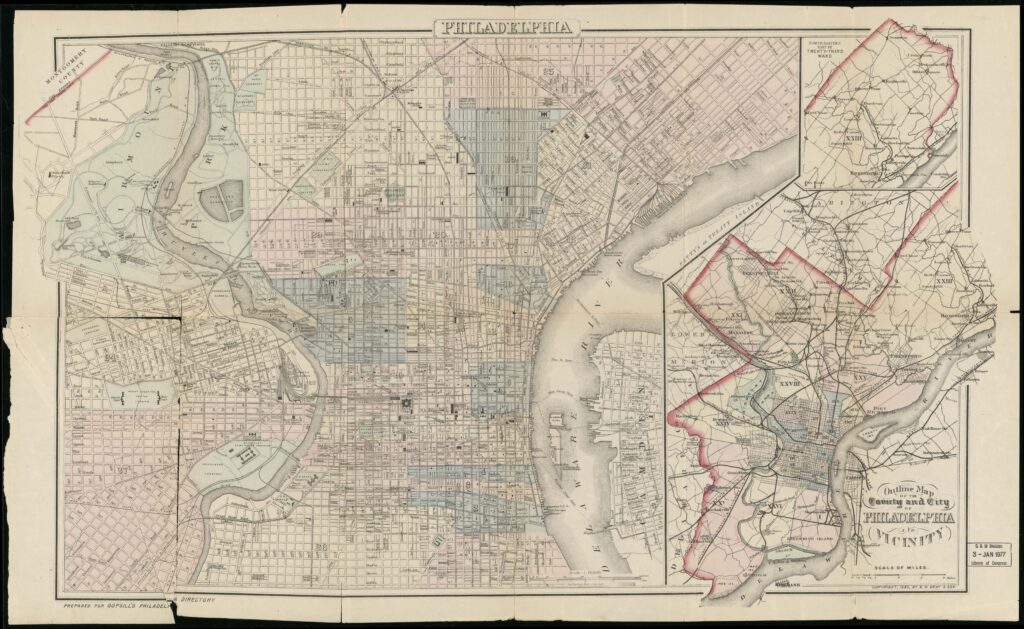

Boys sit on upturned boxes outside the dispensary, west of Independence Square, 1887 (Library Company of Philadelphia)
700 block of Market Street, 1897 (Library of Congress)
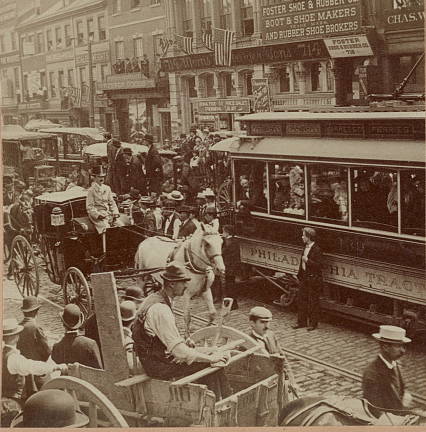

Morris Canby family in Germantown 1885 (Library Company of Philadelphia)
Unidentified middle-class woman from Louisa White album, 1878 (Library Company of Philadelphia)
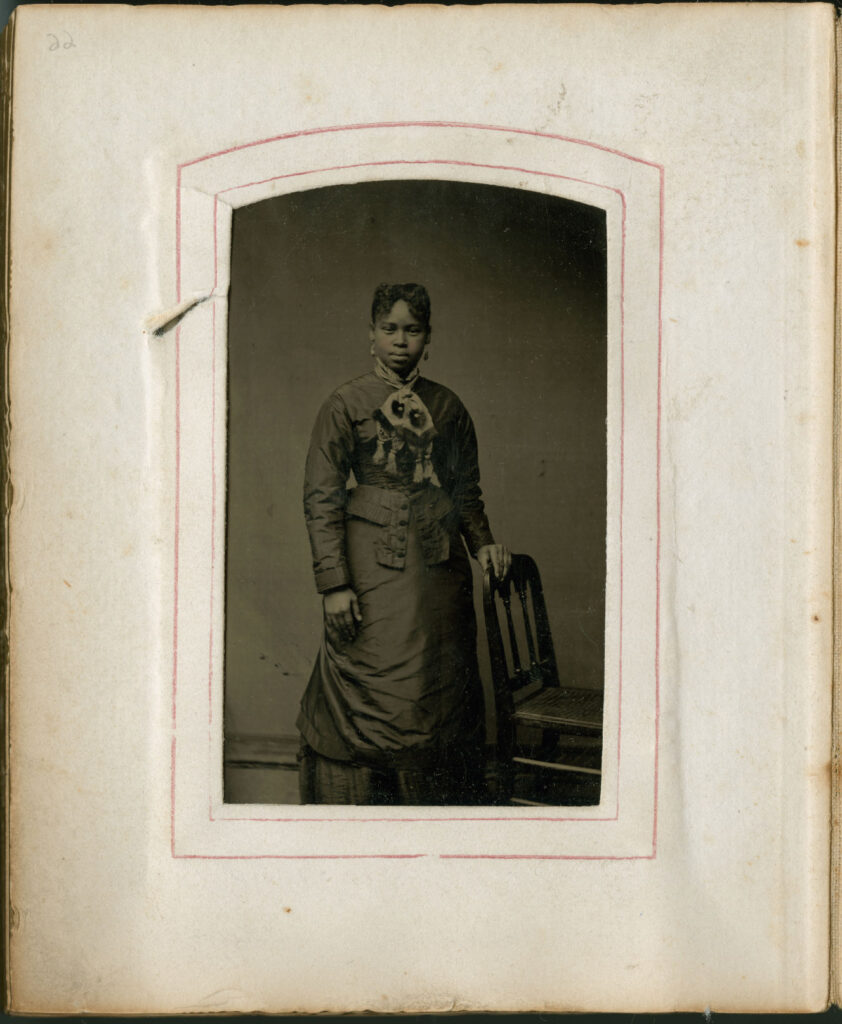

Lombard Street 1891 (Library of Congress)
Emmeline Street 1892 (Library of Congress)

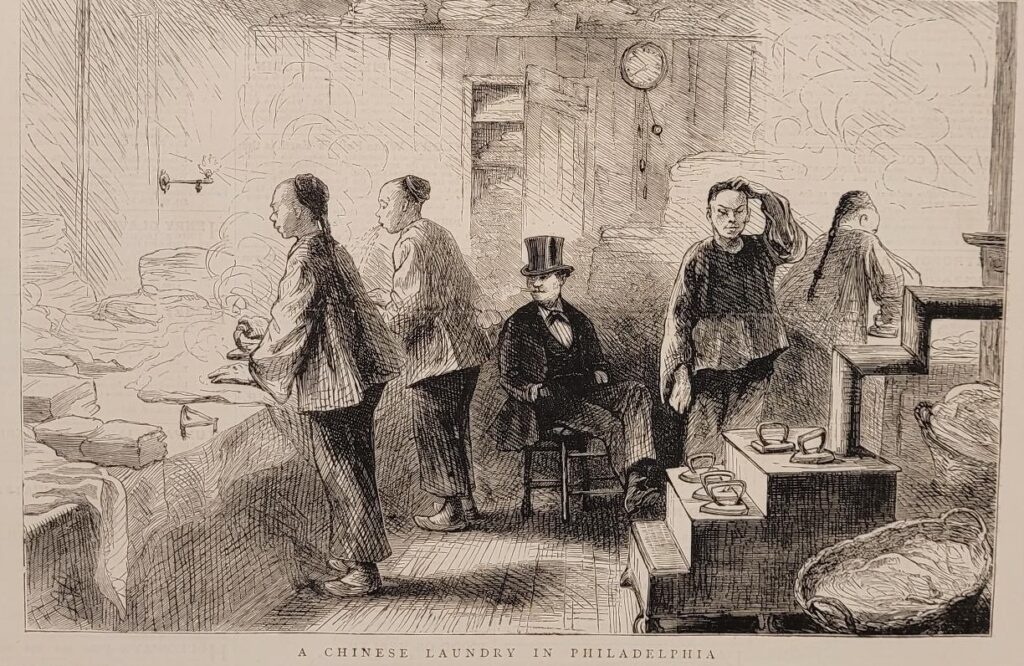
A Chinese laundry in Philadelphia, Leslie’s Illustrated Weekly, 1876
Resources
Adams, Peter. “Prosperity and Discrimination in the Gilded Age.” Politics, Faith, and the Making of American Judaism. University of Michigan Press, 2014: 98–109.
Anon. “The Furl Savings Society.” Philadelphia Inquirer. 12 July 1870: 2.
Barreyre, Nicolas. “The Politics of Economic Crises: The Panic of 1873, the End of Reconstruction, and the Realignment of American Politics.” The Journal of the Gilded Age and Progressive Era. Vol. 10, no. 4, 2011: 403–23.
Beugoms, Jean-Pierre. “Armories.” Greater Philadelphia Encyclopedia, 2017. https://philadelphiaencyclopedia.org/essays/armories/
Blumin, Stuart M. “The Hypothesis of Middle-Class Formation in Nineteenth-Century America: A Critique and Some Proposals.” The American Historical Review, vol. 90, no. 2, 1985: 299–338.
Broder, Sherri. Tramps, Unfit Mothers, and Neglected Children: Negotiating the Family in Late-Nineteenth-Century Philadelphia. Philadelphia: University of Pennsylvania Press, 2002.
DePastino, Todd. Citizen Hobo : How a Century of Homelessness Shaped America. University of Chicago Press, 2003.
Dickinson, Joan Younger. “Aspects of Italian Immigration to Philadelphia.” The Pennsylvania Magazine of History and Biography. Vol. 90, no. 4, 1966: 445–65.
Dinwiddie, Emily Wayland. Housing Conditions in Philadelphia. United States, n.p, 1904.
Dirks, Robert. Food in the Gilded Age: What Ordinary Americans Ate. 1st ed., Rowman & Littlefield Publishers,
Du Bois, W. E. B. The Philadelphia Negro: A Social Study Philadelphia: University of Pennsylvania Press, 1899.
Gertrude, M. Agnes. “Italian Immigration into Philadelphia.” Records of the American Catholic Historical Society of Philadelphia. Vol. 58, no. 2, 1947: 133–43.
Heath, Andrew. In Union There Is Strength: Philadelphia in the Age of Urban Consolidation. University of Pennsylvania Press, 2019.
Hepp, John H. The Middle-Class City: Transforming Space and Time in Philadelphia 1876-1926. Philadelphia: University of Pennsylvania Press, 2003.
Kahan, Arcadius. “Economic Opportunities and Some Pilgrims’ Progress: Jewish Immigrants from Eastern Europe in the U.S., 1890-1914.” The Journal of Economic History. Vol. 38, no. 1, 1978: 235–51.
Kahan, M. B. “Jewish Girls’ Street Peddling in Gilded Age Philadelphia: Ethnic Niche, Family Strategy, and Sexual Danger.” Journal of the History of Childhood and Youth, 12(3), 2019: 374-392.
Kahan, Michael. Pedestrian Matters: The Contested Meanings and Uses of Philadelphia’s Streets, 1850s-1920s. Dissertation. University of Pennsylvania. 2002.
Kahan, Michael B. “The Risk of Cholera and the Reform of Urban Space: Philadelphia, 1893.” Geographical Review. Vol. 103, no. 4, 2013: 517–36.
Katz, Michael B. “Social Class in North American Urban History.” The Journal of Interdisciplinary History, vol. 11, no. 4, 1981: 579–605.
Krulikowski, Anne E. “Octavia Hill Association,” Greater Philadelphia Encyclopedia, 2012. https://philadelphiaencyclopedia.org/essays/octavia-hill-association/
McShane, Clay, and Joel A. Tarr. The Horse in the City: Living Machines in the Nineteenth Century. Baltimore, MD: The John Hopkins University Press, 2007.
Mercadal, T. “Italian immigration.” The SAGE Encyclopedia of Economics and Society. Vol. 4, 2015: 983-986.
Schweik, Susan M. The Ugly Laws : Disability in Public, New York University Press, 2009. ProQuest Ebook Central, https://ebookcentral.proquest.com/lib/philau/detail.action?docID=865348.
Vapnek, Lara. Breadwinners: Working Women & Economic Independence 1865-1920. Chicago: University of Illinois Press, 2009.
Wang, Joan S. “Race, Gender, and Laundry Work: The Roles of Chinese Laundrymen and American Women in the United States, 1850-1950.” Journal of American Ethnic History. Vol. 24, no. 1, 2004: 58–99.
Wilson, Kathryn. “Chinatown.” The Encyclopedia of Greater Philadelphia, 2015. https://philadelphiaencyclopedia.org/archive/chinatown/
Wilson, Kathryn E. “Claiming Space, Creating Chinatown, 1870–1940.” Ethnic Renewal in Philadelphia’s Chinatown: Space, Place, and Struggle, Temple University Press, 2015: 15–39.
Wolfinger, James. Running the Rails : Capital and Labor in the Philadelphia Transit Industry, Cornell University Press, 2016.
